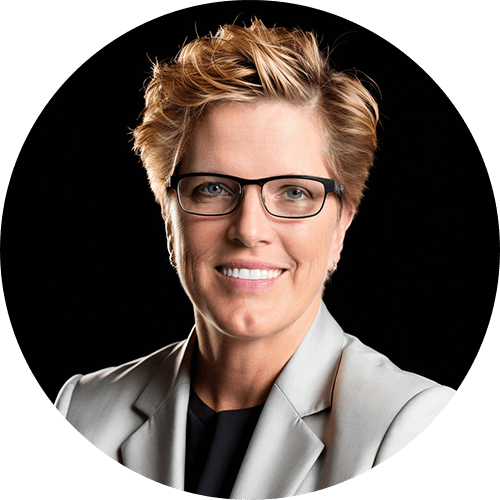Many assert that COVID-19 has brought on a mind-numbing monotony. One day appears the same as the next. Interestingly, I’m seeing the exact opposite in Learning & Development (L&D), the business function responsible for bringing new hires up to proficiency as well as sharpening the skills and creating new ones for existing employees at the world’s great companies.
There’s continuous adaptation and innovation to deal with the COVID-19-related disruptions to training activities. To better understand this, I hosted a webinar recently on “Learning in the ‘New Normal’.” Two L&D pros shared with me COVID-19’s impact on training activities at their companies. They’re Erika Moree, Synchrony’s VP of Learning Solutions, and Marilyn Mitchell, Konica-Minolta Business Solution’s Director of Professional Development and Enterprise Learning.
Erika directs the learning design experience for Synchrony’s customer service associates working in the US, India, and the Philippines. Marilyn leads the organization that deals with all aspects of learning for Konica-Minolta’s sales and service personnel operating out of many branch and regional offices as well as field service locations.
While they oversee L&D activities for different units of two very different companies, both found they mutually learned three valuable lessons to deal with a disruption like COVID-19 that also are shaping their thinking toward employee training in the post-pandemic period the lies ahead. The 3 lessons are:
1. Be able to adapt how learning needs to be conducted
2. Deliver the right learning content in the right way
3. Learning must be continuous in a time of discontinuity
Lesson #1: Be able to adapt how learning needs to be conducted
Once the COVID-19 reality set in, Synchrony sent 7,000 of its 12,000 associates to work from their homes. Everything was all done in a couple of weeks. A big part of that effort was to equip the customer support personnel with all they needed to do their jobs. From a learning perspective, if they didn’t have the right gear to do their work, they weren’t going to be able to engage in learning activities.
The use of different and/or new technology meant the learning strategy had to change. Erika’s team emphasized digital learning experiences. She said, “the learning strategy had to quickly go from a macrolearning one to a microlearning strategy, just to give you an idea of scale.”
According to Marilyn, technology adoption at Konica-Minolta “wasn’t really much of a problem for us…we were lucky enough to have already made that investment in technology…and we have a mobile workforce.” Still, even with a strong technology foundation, she saw the need to change to different kinds of learning activities and the way they were provided.
Marilyn observed that her company’s learning processes, and delivery methods needed to be changed – with everything happening faster because it had to. For example, salespeople were taking on service roles. They needed to be upskilled quickly and effectively. Time was truly of the essence.
In-class training was out of the question, obviously. But both Erika and Marilyn employed instructor-led virtual sessions, digital webinars, and microlearning conducted in the flow of work
Lesson #2: Deliver the right learning content in the right way
Working from home (WFH) may have decreased the time of people’ commutes. But it increased the number and types of distractions. Even in canine-friendly offices, the company pooch was often a lethargic Labrador. A far cry from the incessant barking of a neighbor’s pet. And then there’s the kids. A colleague of mine seeks counsel from anyone on how to instill the concept of boundaries in his children. I could go on, but you get my point.
Given those, and other, distractions, getting employees to engage with training is even more a of challenge than in the pre-COVID-19 days. These are people understandably stressed out by the demands of work, the emotional and intellectual impact of WFH, and the very real concerns about the health and safety of loved ones and themselves. Learning completion rates are affected. Absorption of the learning content is hampered. And evidence of adapting the learning to work may be slim.
Before COVID-19, Erika said, “learning was an event…you attended a classroom or digital environment…where you had to leave your job to do it.” But, during this health crisis, the ability, even the availability, to be off the phone is a challenge. It’s something that has to be managed.” To deal with that, Erika shifted from highly-produced, lengthy learning material to quickly-made, delivered, and consumed learning content. Reading material became one-pagers. Videos ran a few minutes in duration. She said, “that made me nervous…but it really worked, and we were able to do more things.”
“For most companies, there is some amount of digital training already in place,” Marilyn said. The question is how much. Research that Centrical conducted among professionals involved in or responsible for L&D found that just 22% of respondents said most of their content was designed for online consumption before the health crisis. “Few say they’re fully digital,” Marilyn said. She added, “moving classroom training to online is a process,” suggesting the crisis may have given ample reason to accelerate that move. Erika noted, “it really has moved our digital strategy forward so much quicker.”
Lesson #3: Learning must be continuous in a time of discontinuity
In several ways, COVID-19-created discontinuity was a proverbial mother of invention of different methods to engage employees engage with learning activities. Among them was a wider application of microlearning and, of course, using digitally-based training in unexpected ways. These combined to shift learning from being an “event,” as Erika suggested, to something that occurred in short bursts, multiple times a day.
For example, Erika implemented daily knowledge checks that came from a pool of questions. She said, “any quiz tool can be used to make it happen. And the questions come from things we’re focused on.” It can be queries about regulations, operations, quality. “It takes less than two minutes to get done. Every week the responses are analyzed.” That data offers insight into customer support associates that Erika never had. She uses it for proactive learning needs analysis. By learning who’s doing well and not so well on a range of topics and issues she can decide what learning intervention is going to be used on an individual employee basis. And all in a digital framework.
Too often we think only about employees when it comes to training. However, the need to make certain that managers’ skills are current and strong in a time of discontinuity is critically important. Especially so regarding managers’ coaching skills.
In that regard, Marilyn is in the process of developing a new virtual coaching session at Konica-Minolta. She said, “there are a number of topics that the sales managers cover to train their reps. But this goes further than that. We want them to not only be trained. We want them to be able to practice virtually.” Reps can practice with each other as well as record their presentations so their managers can see how they’ve done and then be coached to get to the next level. It allows for this important training activity to be handled in manageable time slices, done at anytime, anywhere. In addition, the process includes training on coaching, including learning how to inspire from a far. It’s one thing to pat someone on the shoulder for a well-done sales pitch. It’s quite another to do so on a remote basis. Understanding how to do that makes for better coaches and better coached, better performing sales reps.
Marilyn and Erika echoed the view that in the future, post-pandemic, learning will have to be continuous. In part because discontinuity, of one form or another, will be nearly continuous.
A View of the L&D Future
I asked Erika and Marilyn to offer what L&D will look like, how it will operate in the days after COVID-19. In sharing their views, it became clear they feel effective L&D in the future will be marked by anytime, anywhere, ongoing learning – often self-learning – that keeps employees at the top of their game. Reflecting that, nearly 80% of those responding to our survey envision a transition to more adaptive, more agile learning tools.
For example, since so many will (or will continue) to work remotely, the need for remote digital training will be high. Still, that doesn’t spell the end of instructor-led training. Marilyn sees training will “become more and more blended.”
She adds, “you can’t just take instructor-led training and immediately turn it into virtual training. You really have to think about what it is, what you’re delivering. You must think about the mind share of the individual. On the other hand, you need to think about the number of people that will be participants in your virtual training and how to get them to interact with one another. Further, the instructors will need to deliver differently. They’ll need to be trained on how to connect with the people more often than they would in a classroom situation. So, it takes time. Having the right tools in place makes it easier.” She cautions, “if you’re not currently using any kind of tools for virtual, be careful about what you select and what the delivery mechanism is.”
Even how the way content is produced will need to be adjusted for the future. Consider that the screens most work-from-anywhere employees will view virtual or digital training will be the ones on their mobile phones. The form of content must work in the form factor being used.
Erika suggested another shift in training’s future will be who determines training needs. Up till now that direction has largely come from managers and leaders. She notes they are “customers in a lot of ways. But looking ahead, looking at it from the lens of the learner and using data to determine the content they need to let them learn in the flow of work will crucial.”
Remote learning, she adds, “ requires a lot of coaching conversations, be they person-to-person or by way of pushed notifications. When those conversations should happen, those alerts sent can be aided by looking at the available data.”
Onboarding in the next period will likely be synchronous where possible, Erika noted. The reason continues to be a desire to reduce the time to proficiency. But with an expected greater use of virtual training, instructors will need the right training and certification because “it’s a different skill set, different facilitation, and different design from the pre-COVID-19 standard classroom training. And it happens to be something we’re working on now.”
Marilyn summed up a fascinating exploration of the future of L&D (which you can hear on replay) this way: “Learning becomes something that is part of the job, a daily habit of employees.”
I sincerely hope you can apply Erika’s and Marilyn’s COVID-19 L&D lessons to your own organization’s benefit, today and tomorrow.







 Madeleine Freind
Madeleine Freind
 Natalie Roth
Natalie Roth Linat Mart
Linat Mart












 Doron Neumann
Doron Neumann Gal Rimon
Gal Rimon Daphne Saragosti
Daphne Saragosti Ella Davidson
Ella Davidson Ariel Herman
Ariel Herman Ronen Botzer
Ronen Botzer